

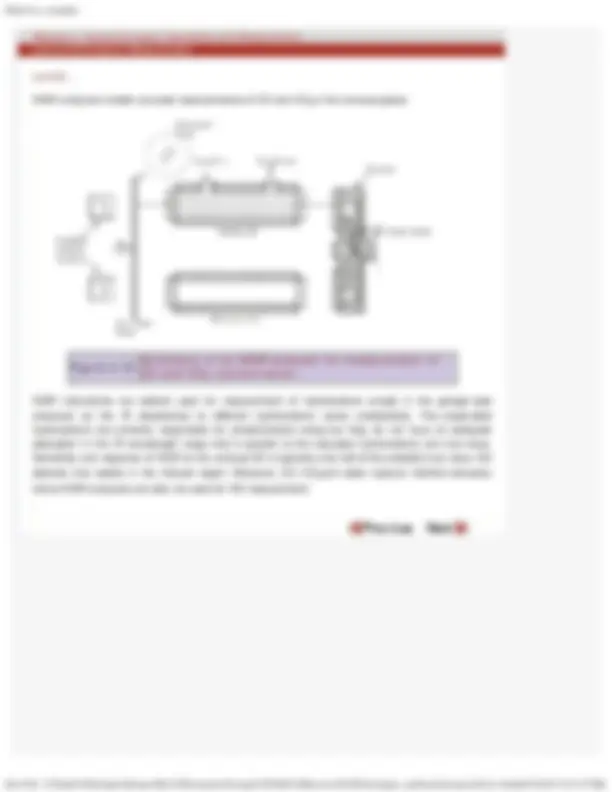
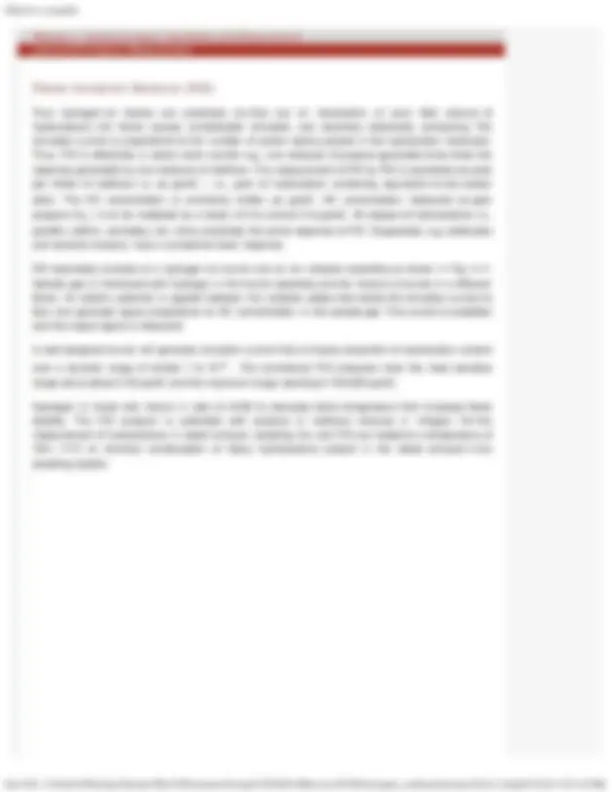
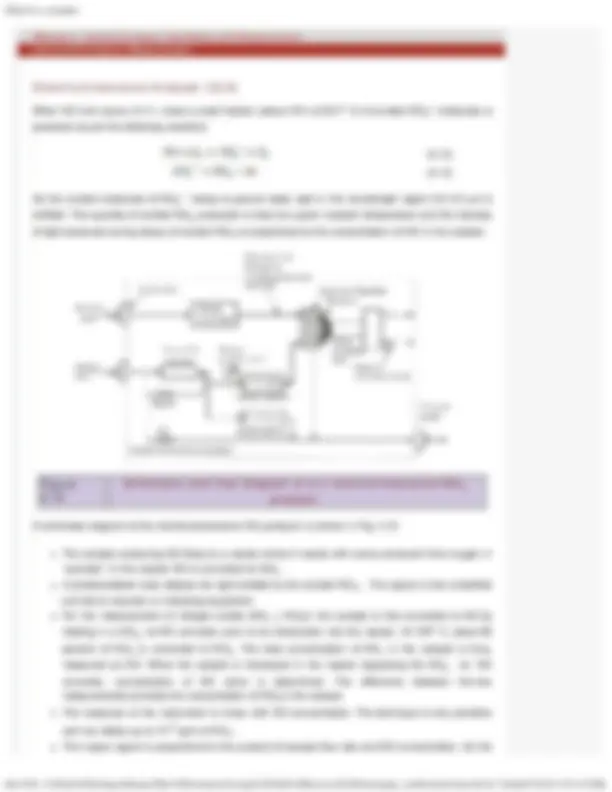

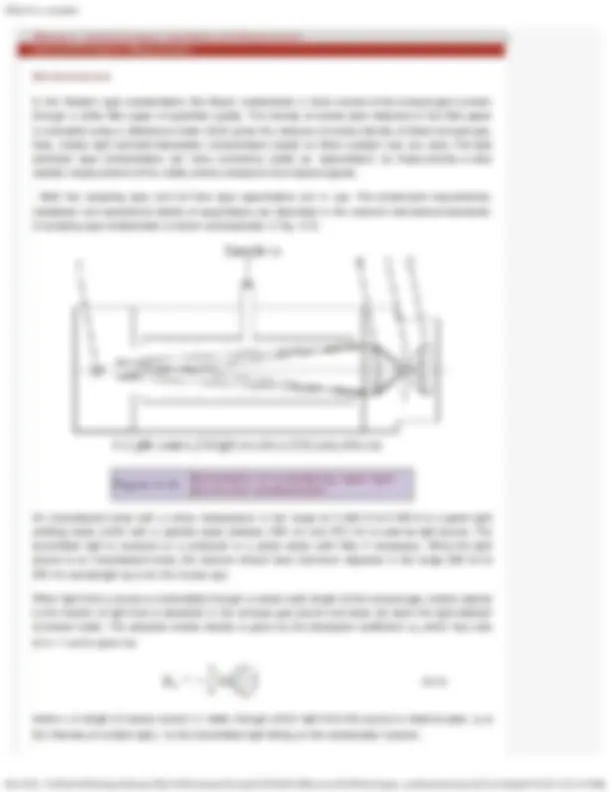


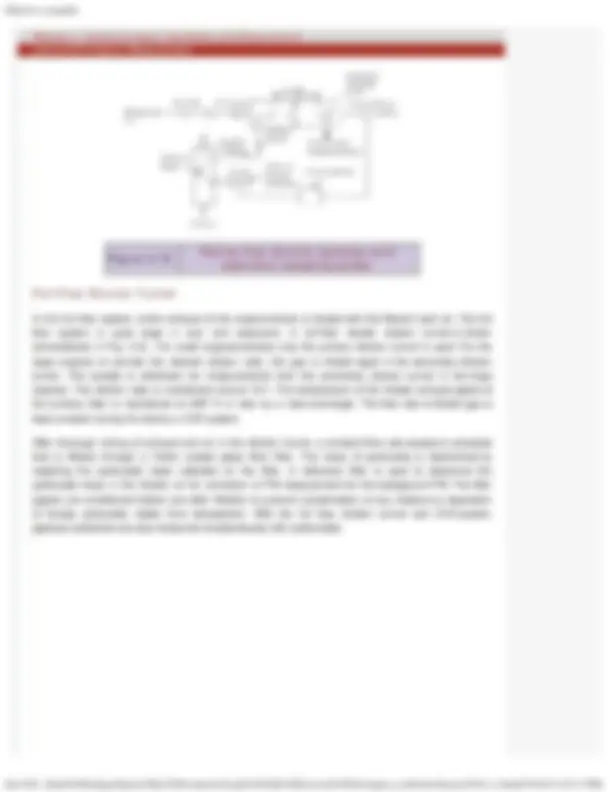


Study with the several resources on Docsity

Earn points by helping other students or get them with a premium plan


Prepare for your exams
Study with the several resources on Docsity

Earn points to download
Earn points by helping other students or get them with a premium plan
Community
Ask the community for help and clear up your study doubts
Discover the best universities in your country according to Docsity users
Free resources
Download our free guides on studying techniques, anxiety management strategies, and thesis advice from Docsity tutors
The major points are: Emission Measurement, Flame Ionization Detector, Chemiluminescence Analyzer, Smokemeters, Constant Volume Sampler, Particulate Emission Measurement, Partial Flow Dilution Tunnel, Full Flow Dilution Tunnel
Typology: Study notes
1 / 17

This page cannot be seen from the preview
Don't miss anything!










The emission regulations specify the type, principle of operation used and generic construction of the exhaust gas analyzers which can be employed for emission certification of vehicles and engines. Table 4.9 gives the type of analyzers used for measurement of different exhaust gas constituents.
CO NDIR (Non-dispersive infrared) HC FID (Flame Ionization detector) NO (^) x CLD (Chemiluminescence detector)
Beer-Lambert's Law is used for operation of NDIR analyzers by measuring the degree of absorption of infrared (IR) radiations when they pass through a column of gas. The fraction of incident radiations absorbed is given by,
where
I = Radiation energy absorbed
I 0 = Incident radiation energy
k = characteristic absorption constant for the gas, m 2 /gmol
c = concentration of the gas, gmol/m 3
d = length of the gas column, m
NDIR analyzers enable accurate measurements of CO and CO 2 in the exhaust gases.
NDIR instruments are seldom used for measurement of hydrocarbons except in the garage type analyzers as the IR absorbance to different hydrocarbons varies substantially. The unsaturated hydrocarbons are primarily responsible for photochemical smog but they do not have an adequate absorption in the IR wavelength range that is specific to the saturated hydrocarbons and vice versa. Sensitivity and response of NDIR to the exhaust HC is typically only half of the probable true value. NO absorbs only weekly in the infrared region. Moreover, CO, CO 2 and water vapours interfere seriously;
hence NDIR analyzers are also not used for NO measurement.
Pure hydrogen-air flames are practically ion-free but on introduction of even little amount of hydrocarbons the flame causes considerable ionization and becomes electrically conducting. The ionization current is proportional to the number of carbon atoms present in the hydrocarbon molecules. Thus, FID is effectively a carbon atom counter e.g., one molecule of propane generates three times the response generated by one molecule of methane. The measurement of HC by FID is expressed as parts per million of methane i.e. as ppmC 1 i.e., ppm of hydrocarbon containing equivalent of one carbon
atom. The HC concentration is commonly written as ppmC. HC concentration measured as ppm propane (C 3 ) is to be multiplied by a factor of 3 to convert it to ppmC. All classes of hydrocarbons i.e.,
paraffin, olefins, aromatics, etc. show practically the same response to FID. Oxygenates, e.g. aldehydes and alcohols however, have a somewhat lower response.
FID essentially consists of a hydrogen-air burner and an ion collector assembly as shown in Fig. 4.11. Sample gas is introduced with hydrogen in the burner assembly and the mixture is burned in a diffusion flame. An electric potential is applied between the collector plates that makes the ionization current to flow and generate signal proportional to HC concentration in the sample gas. This current is amplified and the output signal is measured.
A well-designed burner will generate ionization current that is linearly proportion to hydrocarbon content
over a dynamic range of almost 1 to 10 6. The commercial FID analyzers have the most sensitive range set at about 0-50 ppmC and the maximum range reaching 0-100,000 ppmC.
Hydrogen is mixed with helium in ratio of 40:60 to decrease flame temperature that increases flame stability. The FID analyzer is calibrated with propane or methane mixtures in nitrogen. For the measurement of hydrocarbons in diesel exhaust, sampling line and FID are heated to a temperature of 191± 11°C to minimize condensation of heavy hydrocarbons present in the diesel exhaust in the sampling system.
Measurement OF Non-Methane Hydrocarbons (NMHC)
Presently, the emission standards are specified in terms of non-methane hydrocarbons. Methane content of HC emissions is determined by one of the following methods:
Gas chromatographic (GC) method or Non-methane cutter (NMC) method
In the GC method, sample is injected into GC column which separates the sample into two parts:
(ii) NMHC–CO 2 –H 2 O.
A molecular sieve column separates methane from air and CO before passing it to FID. Thus methane content is measured that is deducted from the total hydrocarbon content.
In the NMC method, all hydrocarbons except CH 4 are oxidized to CO^2 and water on a catalyst, so that
when the gas sample is passed through NMC only CH 4 is detected by HFID. The NMC cutter is
calibrated for catalytic effect on CH 4 and higher hydrocarbon (ethane) mixtures in presence of water
vapours with values typical of exhaust gas at or above 600 K. The sample can be alternatively passed through NMC or bypasses the NMC. In this manner, the total HC and methane alone present in the exhaust gas sample are determined.
When NO and ozone (O 3 ) react a small fraction (about 10% at 26.7° C) of excited NO 2 * molecules is produced as per the following reactions:
As the excited molecules of NO 2 * decay to ground state, light in the wavelength region 0.6-3.0 μm is
emitted. The quantity of excited NO 2 produced is fixed at a given reaction temperature and the intensity
of light produced during decay of excited NO 2 is proportional to the concentration of NO in the sample.
A schematic diagram of the chemiluminescence NO (^) x analyzer is shown in Fig. 4.12.
The sample containing NO flows to a reactor where it reacts with ozone produced from oxygen in ‘ozonator' .In the reactor NO is converted to NO 2. A photomultiplier tube detects the light emitted by the excited NO 2. The signal is then amplified and fed to recorder or indicating equipment. For the measurement of nitrogen oxides (NO (^) x ), NO 2 in the sample is first converted to NO by heating in a NO 2 - to-NO converter prior to its introduction into the reactor. At 315º C, about 90 percent of NO 2 is converted to NO 2. The total concentration of NO (^) x in the sample is thus, measured as NO. When the sample is introduced in the reactor bypassing the NO 2 - to- NO converter, concentration of NO alone is determined. The difference between the two measurements provides the concentration of NO 2 in the sample. The response of the instrument is linear with NO concentration. The technique is very sensitive and can detect up to 10 -3^ ppm of NO (^) x. The output signal is proportional to the product of sample flow rate and NO concentration. As the
In the filtration type smokemeters like Bosch smokemeter a fixed volume of the exhaust gas is drawn through a white filter paper of specified quality. The density of smoke stain obtained on the filter paper is evaluated using a reflectance meter which gives the measure of smoke density of diesel exhaust gas. Now, mostly light extinction/absorption smokemeters based on Beer-Lambert Law are used. The light extinction type smokemeters are more commonly called as ‘opacimeters' as these provide a more realistic measurement of the visible smoke emissions from diesel engines.
. Both the sampling type and full flow type opacimeters are in use. The construction requirements, installation and operational details of opacimeters are described in the relevant international standards. A sampling type smokemeter is shown schematically in Fig. 4.13.
An incandescent lamp with a colour temperature in the range of 2 800 K to 3 250 K or a green light emitting diode (LED) with a spectral peak between 550 nm and 570 nm is used as light source. The transmitted light is received on a photocell or a photo diode (with filter if necessary). When the light source is an incandescent lamp, the receiver should have maximum response in the range 550 nm to 570 nm wavelength as is for the human eye.
When light from a source is transmitted through a certain path length of the exhaust gas, smoke opacity is the fraction of light that is absorbed in the exhaust gas column and does not reach the light detector of smoke meter. The absolute smoke density is given by the absorption coefficient, k (^) s which has units
of m -1 and is given by:
where L is length of smoke column in meter through which light from the source is made to pass, I 0 is
the intensity of incident light, I is the transmitted light falling on the smokemeter receiver.
In the full flow type smokemetersm, the light source and detector are placed directly across the exhaust gas stream usually at the end of exhaust pipe. In this case, path length of smoke measurement varies with the cross sectional size of the exhaust gas stream or tail pipe. Hence, conversion charts of the measured value to the absolute smoke density, k (^) s for different exhaust pipe diameter or path lengths
are made available for the full flow smoke meters.
bag to correct for any background concentration of pollutant present in the dilution air. The sample bags are analyzed after the test is completed. The mass of individual pollutants is determined from its measured concentration in the sample bag, its density and the total volume flow rate of the diluted exhaust during the test through CVS.
file:///C|/...20and%20Settings/iitkrana1/My%20Documents/Google%20Talk%20Received%20Files/engine_combustion/lecture18/18_10.htm[6/15/2012 3:03:16 PM]
For measurement of particulate emissions, the gas is diluted with air in a dilution tunnel and, a sample is continuously collected from the diluted gas and filtered to collect particulate matter. The mass of the collected PM is measured to determine specific PM emissions in terms of g/km or g/kWh.
The dilution tunnels are of two types
Partial flow, and Full flow dilution tunnel
In the partial-flow system, only a small part of the exhaust stream is diluted. To withdraw a true representative of the exhaust gas the following systems have been developed;
Isokinetic sampling systems Flow controlled systems with concentration measurement, and Flow controlled systems with flow measurement
In an isokinetic system, the gas velocity in the sampling tube which leads the sampled exhaust gas to dilution tunnel is kept same in magnitude as the velocity of the bulk exhaust gas stream. In this way, an undisturbed and uniform exhaust gas sample flow at the inlet of sampling probe is obtained.
An isokinetic system is shown schematically in Fig. 4.15. Raw exhaust gas is transferred from the exhaust pipe to the dilution tunnel (DT) through isokinetic sampling probe (ISP) and the transfer tube. The differential pressure of the exhaust gas between exhaust pipe and inlet to the probe is measured with a pressure transducer. The signal is fed to a flow controller that controls the suction blower and, a differential pressure of zero at the tip of probe is maintained. Under these conditions, exhaust gas velocities in the exhaust pipe and probe are identical and the flow through isokinetic probe is a constant fraction of the exhaust flow. The sampling rate can be obtained by the ratio of cross sectional areas of probe and the exhaust pipe. The dilution airflow rate is measured with the flow meter. The dilution ratio is calculated from the dilution air flow rate and exhaust sample to total exhaust flow ratio.
file:///C|/...20and%20Settings/iitkrana1/My%20Documents/Google%20Talk%20Received%20Files/engine_combustion/lecture18/18_11.htm[6/15/2012 3:03:17 PM]
file:///C|/...20and%20Settings/iitkrana1/My%20Documents/Google%20Talk%20Received%20Files/engine_combustion/lecture18/18_12.htm[6/15/2012 3:03:17 PM]